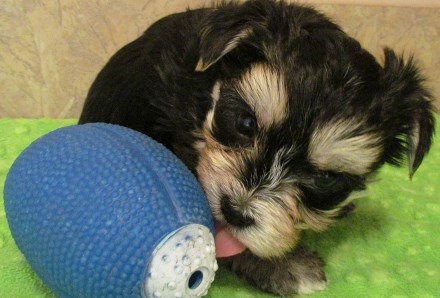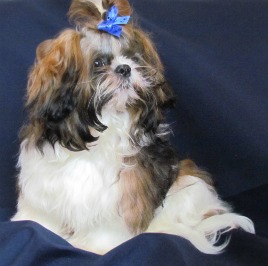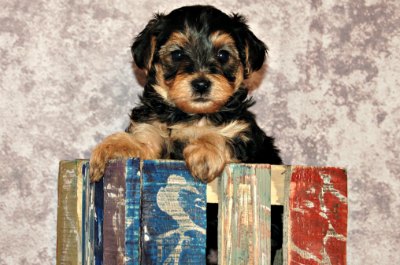- Small Dog Place Home
- Lifestyle
- Dog Photography
Pet Lovers guide to Dog Photography for Amateur Photographers
Create stunning photos of your dog using these 7 simple
techniques
by Janice Jones |Updated 10-18-2023
Dog Photography does not have to be left to professionals. Dog lovers can take amazing photographs of their pets to share with friends and family.
A picture is worth a thousand words, as they say, so get those creative juices flowing and craft the perfect photo even if you don’t have an ideal camera and years of experience.
Warning: This information is for amateurs, but professional photographers might learn a thing or two along the way.
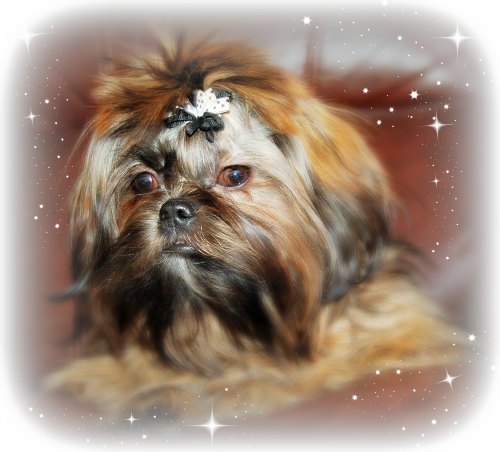
Producing the perfect photo of a puppy or adult dog is not as easy as taking a still shot or panoramic view of a beautiful field of flowers. Some highly trained pooches love the limelight and jump through hoops when one calls Lights, Camera, and Action.
But for the average dog, cameras or smartphones are just another exciting object that can be sniffed, licked, bitten, or dragged away to bury. To others, the flash of a camera can be as stressful as a front-row seat at a yearly fireworks display.
So, how do you coax your dog into allowing you to photograph him without causing undue stress on either him or you?
Planning is a big part of capturing a great photo, but preparing for your next photo shoot doesn’t need much effort.
What do you need to Photograph Your Small Dog
- A camera or smart phone with working camera
- A dog or puppy
- Some great tasting treats
- Some interesting and novel toys or objects
- Optional: Additional lighting
Seven Tips for Great Dog Photography
Tip #1: Great Lighting
Lighting and lots of it, but not the sunshine variety is key to successful dog photography.
Lighting is the key to any photo and especially when you are trying to photograph a dog especially a dark brown or black dog. Everyone knows that even the best editing software won’t lighten up and make a poor photo into a masterpiece.
Professionals will tell you that natural lighting is the best, so outdoor shots often turn out better than those taken indoors even when there is great natural light.
A sunny day though is not always the best for taking great photos because it is difficult to remove shadows. Further, dogs are not inclined to sit and pose directly into sunlight so you can’t get true expressions on a very sunny day.
Cloudy days are best, but don’t wait until the moment before the big storm to consider the photo shoot. (Unless of course, the movement of clouds above your pooch is what you want to capture in your dog photography.
If you want a great natural shot of your dog indoors, open all window shades to create a well-lit environment, and then turn off your flash.
The flash on many cameras create distorted colors that do not accurately reflect the true beauty of your dog’s coat.
If you want a great studio portrait of your dog indoors, your best bet is to place two light sources on either side of the camera and turn off the flash. This is something you might want to experiment before you get your dog.
Choose your spot and take a picture of an object using only a flash, only room lighting, and both. Add additional lighting sources if you have them such as work lights, but do not shine them directly on the object. Experiment until the lighting is just right, then get your dog.
Tip #2: A Bird’s Eye View
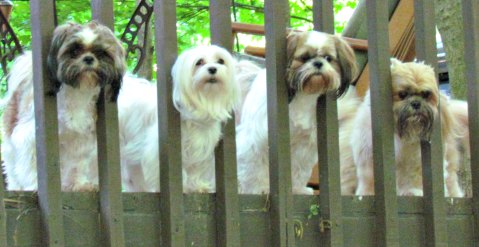
We tend to look down on our small dog and photograph him from above. This can be an interesting angle, but other angles are just as fascinating.
Consider shooting up instead of down or even at eye level. Shooting small dogs at eye level or looking up requires a little maneuvering on our part. Stoop down or lay on the floor for some great views.
What, you say, too hard to get down that low? Consider using a staircase. Your dog can be at the top of the steps and you many steps down, and you will both be on the same level.
Or, photo your dog at the top and you at
the bottom. Have you considered tilting
the camera to get a slanted view of your fur baby? Exciting dog photography is not limited to one angle.
Tip #3: Stage Props for your Dog Photography
Objects lend interest to your photos and also can be used to spark the curiosity of your dog. Objects can be new dog toys or something that you do not mind your dog sniffing and investigating.
A curious dog is less likely to be moving around, and this is especially important if you are trying to photograph a hyper pooch. Find something that will catch her attention and keep it long enough for you to snap the picture.
Tip #4: A Little Help From a Friend
You can make wonderful photos of your dog all by yourself, but if you really want something especially interesting, consider enlisting the help of a friend. Your friend can serve to gain your dog’s attention as you snap a picture.
If you want your dog to look at the camera, have a friend stand as close to the camera as possible. If your aim is to have your dog looking somewhere else, position your friend accordingly.
Tip #5: Charged and Ready to Go
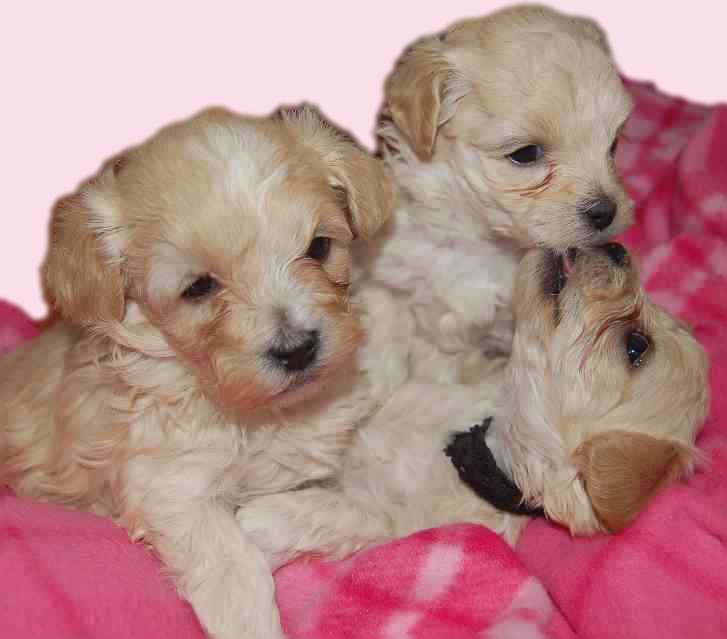
It goes without saying that you can’t take a picture if your camera is not charged, the disk too full or the lens dirty. Make it a point to have your camera ready so when the occasion arises, all you need to do is point and shoot (as they say).
So your camera is ready, is your dog? Have you ever noticed that short haired breeds seem more photogenic than long coated dogs that need much brushing to look exceptional?
Unless you are looking for that “dirty dog” or “shaggy dog” appearance, a well groomed dog always out-performs an unkempt dog in front of the camera, hands down.
Tip #6: Tricks & Treats For Your Dog Photography
Not the Halloween variety, but a good supply of delicious treats is necessary to keep most dogs interested. Choose many different treats, especially ones that smell good.
Break them up into small pieces and hold one between your thumb and forefinger just in front of the dog’s nose; move it slowly to where you want him to look for your photo.
If you have a friend, she can do this while you concentrate on the camera. Once you get the shot, reward the dog with a treat.
Do you want your dog to sit?
If he knows the command, just ask.
If not or if he is being a little stubborn, give him something to sit on
such as a stool. Or, give him something to sit in to confine him.
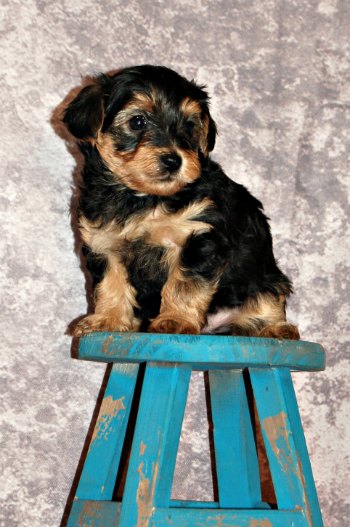
Do you want to get a great shot of your dog looking out of a moving car? Try placing him by the window and hold a treat just outside the view of the camera?
Want his ears to appear as if they are blowing in the wind? Try a handheld fan just outside the camera’s frame.
Want to get a photo of two dogs that look like they are kissing each other? Smear something delicious just above the dog’s nose. Place both dogs together facing each other and snap that photo.
Want to shot a dog that looks like he is jumping, leaping or flying? You’ll need a friend’s help to toss a ball or Frisbee. Your dog doesn’t play fetch?
See if you can get him running and snap a photo at the moment his legs leave the ground. Many digital cameras will allow you to capture this moment with a series of shots. See if your camera has this feature.
Tip #7: In the Background
Creating an uncluttered background is important for great photos unless you plan to remove the background using editing software.
Some mistakes we make are so obvious, but we don’t often think before we shoot. For example, placing a white dog on a white sofa or a brown dog in front of a brown piece of furniture creates a photo that might be better served in a Where’s Waldo book.
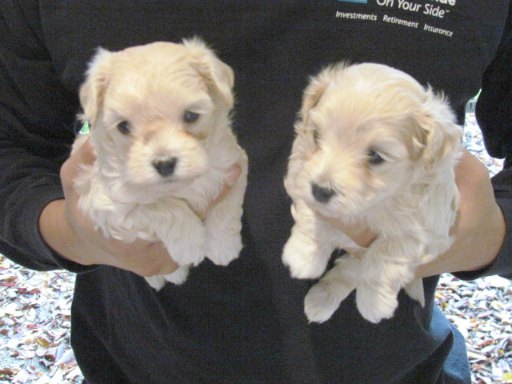
This type of error happens when we are outdoors with our dog, as well. A cute little brown dog digging in the dirt would make a great action shot except you can find the dog. A light colored dog rolling in newly fallen snow is a great story started, except it’s difficult to see the dog. We also get into difficult when we hold our dog for a photo. The dog is cream colored, and we’re wearing a cream colored shirt. You get the picture.
Taking a photo of a dog sitting in front of a very busy background has the same effect. When looking at a photo such as this, your eyes don’t know where to focus first. Sometimes people will photograph their dog standing in front of a plant or tree but the result shows a photo of a dog with branches growing out of their head.
Simple, uncluttered solid color backgrounds work best with dogs.
Your Dog Photography: Take that Perfect Shot
No one can agree on the perfect shot, but the best dog photos I’ve seen are not posed, but rather naturally occurring doggie behaviors that are captured when the dog is either having fun or is not aware he is being photographed.
These are the hardest photos to take from an amateur point of view because they require patience on our part. Scenes of a dog curled up in bed or on top of your pillow, a dog with a big yawn or one engaged in play would make great photos.
Quirky Cute? Your dog photography can make your fur baby a star!
Does your dog do something that makes you smile? How about a dog that sleeps on his back with legs straight up? We have a dog that doesn’t go anywhere without a toy in his mouth? How about a dog who finds clever places to sleep? These all make great photographs.
Best Advice to get you started on your Dog Photography Adventure?
No number of tips will make you professional dog photography without this last and most important element: Have Fun. When you have fun, your dog will have fun, and your photographs will be sensational.
About Janice (author and voice behind this site)
Janice Jones has lived with dogs and cats for most of her life and worked as a veterinary technician for over a decade. She has also been a small-breed dog breeder and rescue advocate and holds academic training in psychology, biology, nursing, and mental health counseling. Her work focuses on helping dog owners make informed, responsible decisions rooted in experience, education, and compassion.
When not writing, reading, or researching dog-related topics, she likes to spend time with her six Shih Tzu dogs, her husband, and her family, as well as knitting and crocheting. She is also the voice behind Miracle Shih Tzu and Smart-Knit-Crocheting
Does This Article Deserve Your Thumbs Up?
We always appreciate your support and encouragement. Your thumbs up means so much to us. Please like this article.
If you find this page or any page on Small Dog Place Helpful, or useful in anyway, I'd love it if you would click the small heart found on the bottom right of each page.
You can also share or bookmark this page -- just click on the:

Free Monthly Newsletter
Sign Up for Our Free Newsletter and get our Free Gift to You.
my E-book, The Top 10 Mistakes People Make When Choosing a Dog (and how to avoid them)

